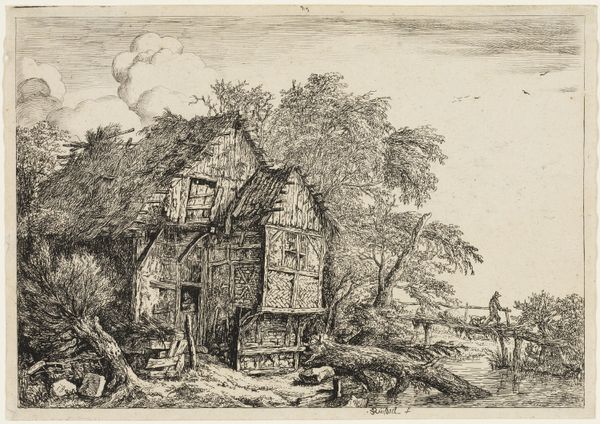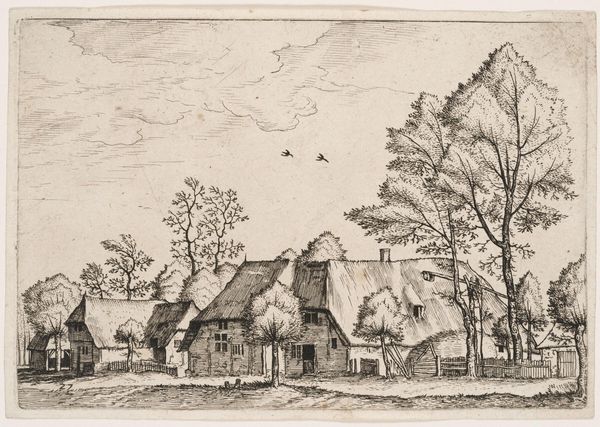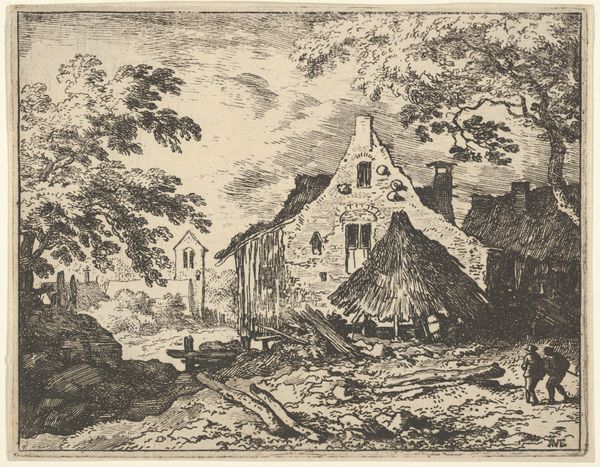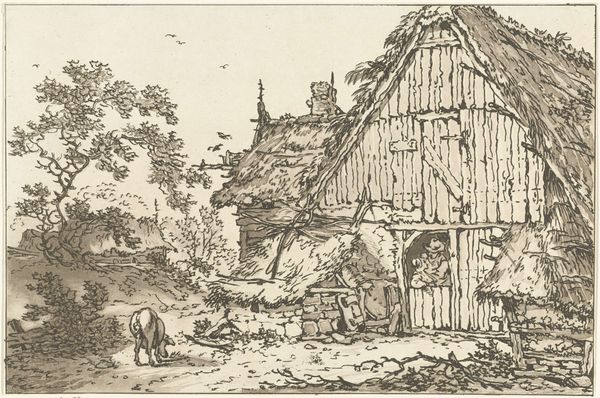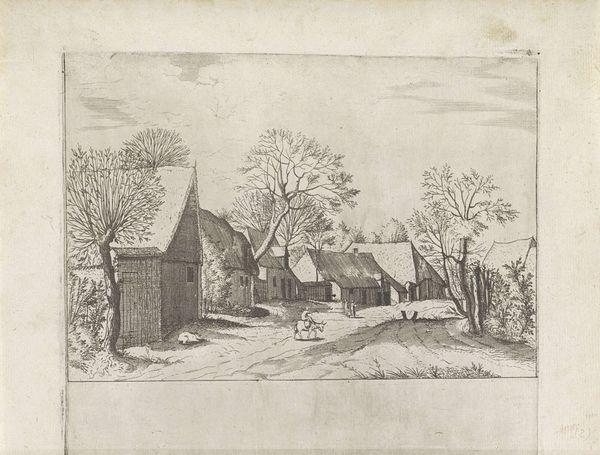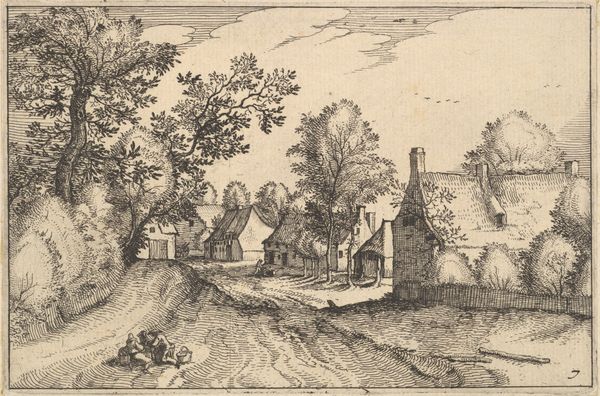
drawing, print, etching
#
drawing
#
baroque
#
pen drawing
# print
#
etching
#
landscape
#
realism
Dimensions: height 86 mm, width 110 mm
Copyright: Rijks Museum: Open Domain
Curator: Welcome. We're standing before "Boerderij aan een landweg," or "Farmhouse along a Country Road," an etching and pen drawing by Gillis (I) Peeters, likely created between 1622 and 1653. Editor: There's a stark, almost melancholic quality to it, isn’t there? The muted tones, the simplicity of the rural scene—it speaks to a quiet life, but perhaps one touched by hardship. Curator: Indeed. Peeters’ work, reflective of the Baroque landscape tradition, often idealized rural life while implicitly reflecting on the social structures of the time. His landscapes capture an apparent realism. But one has to ask, whose reality is shown, and who is in charge of documenting it? Editor: That's a powerful point. Who benefits from the romanticizing of rural existence? I notice the two figures on the path seem rather diminutive next to the landscape and buildings; could it symbolize a power imbalance, humanity's small place in a larger world, perhaps a struggle to survive? Curator: It’s probable. Prints such as this played a crucial role in shaping perceptions of the countryside in the Dutch Golden Age, which saw many forms of indentured or tenant farm labor. Prints could have served as powerful political messages in society. Editor: Right, and the technique itself is interesting. You can almost feel the roughness of the etching, a tactile reminder of the labor involved in creating it. Is there some sort of implicit link to rural life embedded in its physical crafting? Curator: Absolutely. The detailed etching lines bring out details that suggest rustic simplicity. Look closely at the figures on the path. Notice the small detail of the fence and wooden plank on the building to your right. This technique lends authenticity. Editor: I keep thinking about who owned this image, where it was displayed, and who was kept away from it. What conversations did it spark, or shut down? What kind of statements do artists, gallery owners, and we, as viewers, choose to uphold, just by deciding which images and whose images belong in cultural and social discourse? Curator: I agree. Images like these are never just innocent representations. Editor: Thinking about all these connections brings me a bit closer to Peeters’ intention, while at the same time, makes me consider art and social commentary within a much broader modern spectrum. Curator: Agreed. These reflections emphasize how historic works can continue to resonate.
Comments
No comments
Be the first to comment and join the conversation on the ultimate creative platform.


